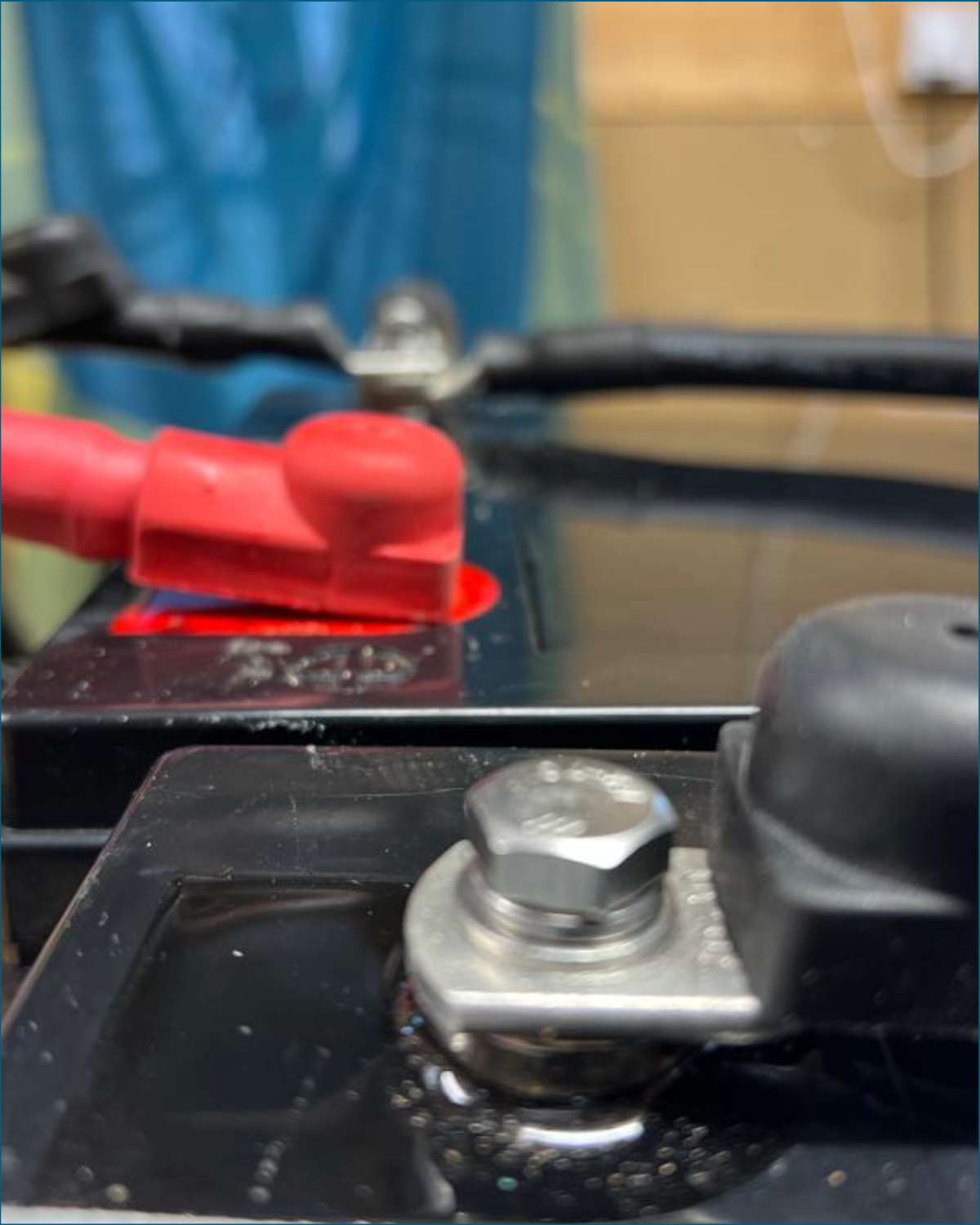What does an inverter do in an RV? Discover the crucial role inverters play in your RV travels, ensuring comfort and convenience on the road. When you’re boondocking in your RV, there are a few key pieces of equipment that you absolutely cannot do without. An inverter is one of them – but what does it do, and why do you need one? Keep reading to find out more!
If you’re planning on living in your camper full-time or even for a few weeks at a time and want the luxury of using your household appliances without the need to stay at campgrounds, you need an inverter.
Most camper conversions, motorhomes, and RVs include a battery bank for charging 12v DC devices.
But what about household appliances like charging laptops, watching TV, or keeping your beers cool in the refrigerator?
These need AC power, so an RV inverter is an essential bit of kit, especially when you’re boondocking and not hooked up to a campground’s shore power facility.
So what does an RV inverter do in an RV, and why do you need one?
Let’s take a closer look.
What is an RV Inverter?
In the most simple terms, an inverter transforms DC power into AC power. But why would you need to?
Alternating current (AC) cannot be stored, but direct current (DC) can, and we use our camper’s leisure batteries to store it.
You can wire your DC appliances to the battery, and they’ll run happily – things like LED lights, a 12v fridge, USB sockets, and ventilation fans.
Appliances usually plugged into a household power outlet need an AC power source.
Appliances like microwaves, laptop chargers, coffee makers, an air conditioner or regular TV won’t run directly from battery power.
When a mains supply isn’t available, just like when you’re boondocking and the camper isn’t hooked up to shore power, you only have your battery bank as a power source, which provides DC power.
But your household appliances won’t run on DC.
You could fire up your RV’s generator because it produces AC power, but that can be noisy and a little overkill if you don’t need to use your household appliances often.
Instead, you can use an RV inverter to convert the battery bank’s stored DC power to AC so you can go ahead and run your household appliances.
Why Do I Need an Inverter in My RV?
The short answer is, you don’t. You don’t need an inverter if you can avoid running any AC appliances when off-grid.
If your RV has a shore power electric hook-up facility, you can still run AC appliances when on a campground.
Battery banks have a finite amount of power.
So whatever you use needs to be replaced, either from a solar setup, charging from the camper’s alternator when the engine is running, or running a generator.
Limiting (or eliminating) the use of powerful AC appliances when not hooked up can help keep you off-grid for longer and may save the need for a large battery bank.
All that said, if you still want to run even a small number of AC appliances on batteries only, you need an RV inverter in your camper.
Some RVs already have an inverter installed.
But if your RV isn’t one of them, the in-built inverter has failed, or you’re building a van conversion, you can buy and install a separate inverter.
How Can I Tell if My RV Has an Inverter?
Suppose you’ve bought a used camper and are unsure if it already has an inverter installed. In that case, you’ll need to get hunting to find it.
First off, make sure you know what an RV inverter looks like – it’ll be something similar to this….
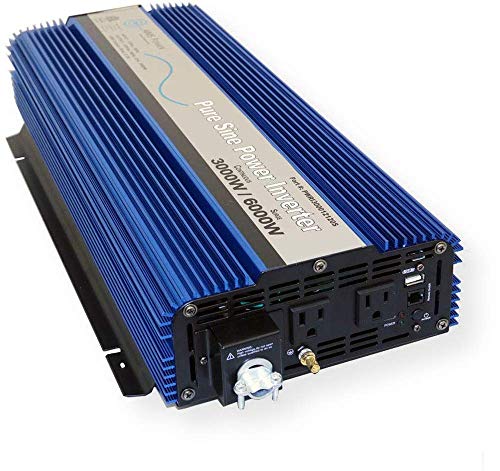
It should be installed pretty close to the battery bank, so if you know where that is (and you should), begin your search nearby.
Unfortunately, not all van conversion companies or DIY builders follow best practices for their installations.
If you can’t find the inverter near the battery bank, look for an electrical cupboard or a labeled switch.
RVs tend not to be huge, so, so long as you know what you’re looking for, you’ll find it eventually – if you have one fitted.
How Does an RV Inverter Work in an RV?
Ok, it’s time to get in touch with your inner geek – we give you fair warning. If you’d prefer to skip this slightly techie section, jump ahead to determine what size inverter you need.
DC power travels in one direction, seemingly a straight line.
AC power oscillates, changing direction between positive and negative voltages.
An RV inverter’s inner workings consist of a series of switches, diodes, or transformers.
As the DC current enters the inverter, these diodes open and close in rapid-fire, either 50 or 60 times a second, depending on what frequency the supply provides.
This turns the straight line, single direction DC voltage into the characteristic wave of AC, amplifying its voltage value from 12v to either 110v or 240v, as per the manufacturer’s specification.
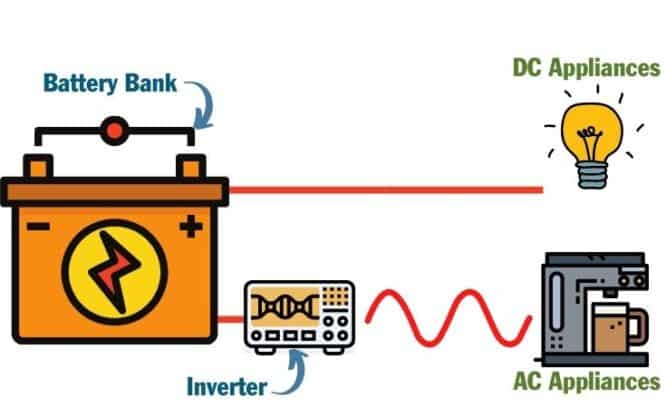
That explains the basic workings of a simple inverter.
Some devices combine the RV inverter with other functions, like inverter chargers (inverter & converter combo) or solar MPPT inverters (inverter & MPPT combo).
The inverter aspect of those devices works in the way described above.
What Type of Inverter Do I Need?
There are three different types of inverters:
- Square Wave Inverter
- Modified Sine Wave Inverter
- Pure Sine Wave Inverter
What is a Square Wave Inverter?
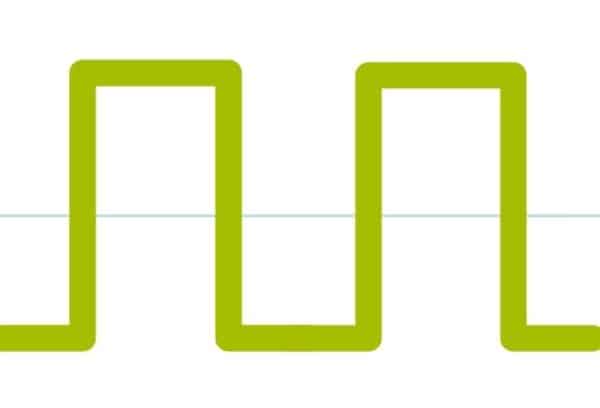
As the name suggests, square wave inverters create a “square” wave. The inverter creates a “wave” that instantly flips between positive and negative voltages rather than more gradually.
It pauses at the AC voltage level (110v or 240v) before flipping to the opposite polarity.
The component parts are simple, so square inverters are low-cost.
This waveform is far removed from that of the mains supply, which is a pure sine wave.
Typically, square wave inverters are ok for running lights and mechanical fans. Sensitive electronics can be irreparably damaged if connected to one of these, though.
The applications for square wave inverters are so limited, there are few, if any, models available on the market today.
What is a Modified Sine Wave Inverter?
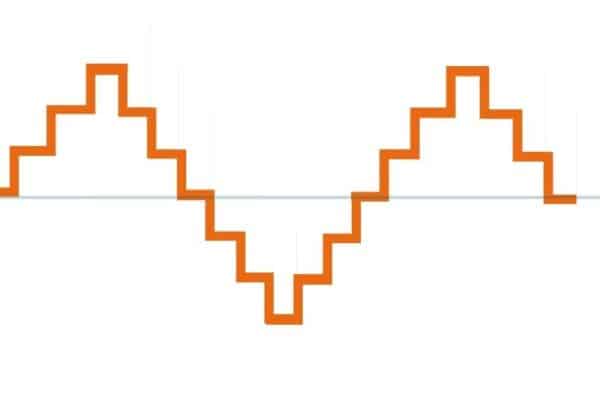
A modified sine wave inverter produces a stepped wave.
Rather than instantly flipping between the positive and negative voltage, it produces a smoother waveform, though still a little clunky.
Following the general shape of a pure sine waveform, the voltage increases in increments with tiny pauses in between until it reaches the AC voltage level.
The power inverter then reduces the voltage in similar incremental steps until it reaches the opposite polarity.
Modified sine wave inverters are more expensive, with component parts more complex than a square wave model, but they are widely available.
Update: square wave inverters are almost impossible to buy now, so modified sine wave inverters are the cheapest available in today’s market.
A modified sine wave inverter can run simple appliances without sensitive electronics.
Water pumps, camera batteries, and laptop chargers will probably run fine, but other appliances like LED TVs or digital clocks won’t work.
What is a Pure Sine Wave Inverter?
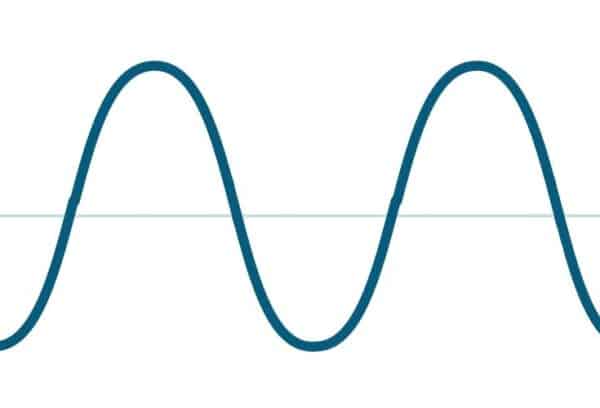
A pure sine wave inverter produces power that most closely matches a mains supply.
The voltages it produces increase and decrease in a smooth transition from positive to negative.
The waveform is smooth, giving a clean, consistent supply of energy.
A pure sine wave inverter will run all your electrical appliances and camper van gadgets
Though a pure sine wave inverter is more expensive than a modified sine wave, it won’t damage your sensitive electronics.
In the last few years, the price of pure sine wave inverters has fallen, shrinking the price difference.
Because they’re becoming more affordable and are more versatile than a modified sine wave, we recommend pure sine wave inverters for RV campers.
What Size Inverter Do I Need in My RV?
Power inverters are sized in watts.
If you read any of the camper van conversion & RVing forums, you’ll likely see posts and conflicting opinions on what size RV inverter you need.
In reality, there isn’t a one size fits all answer.
Instead, you need to understand a few things about your appliances and how you’ll use them:
What AC Appliances Will You Run at the Same Time?
The inverter needs to be powerful enough to run the AC components connected to it at any given time.
By minimizing what you have running simultaneously, you can reduce the size of the inverter you need.
For example, brewing your cup of joe before charging your laptop will need a smaller inverter than if you do both simultaneously.
What’s the Highest Power Draw of Your Appliances?
Some appliances demand a power surge on startup. They take a significant power surge to get going before quickly dropping back to their running level.
An induction cooktop is an excellent example of this kind of appliance.
It may run at an idle rate of around 300w per hour (so a 300w inverter would just about run it), but on startup, or when increasing the temperatures, it could pull as much as 1800w.
Inverters often have a peak rating greater than the continuous power rating, but we’ve not seen a small 300w inverter that can offer that kind of surge.
In all likelihood, in this example, you’d need a 1000w inverter as it’s more likely to support the power surge needed.
You’ll need to check your appliance specifications for any surge demands.
Why Not Get the Largest Inverter?
We recommend an inverter rating of about 25% higher than the expected maximum load you intend to put on the system at any one time.
So why not just go for the largest inverter, so you have the flexibility to run all your appliances at the same time?
You can but remember, you can only take out of the batteries what you put in.
Using inherently power-hungry AC appliances needs a lot of battery juice. The solar panels or engine’s alternator needs to recharge them, so you don’t end up with flat batteries.
A fundamental aspect of sizing an RV inverter is understanding how the component integrates with your entire electrical system.
Understanding your overall energy demands is critical, along with making sure you have a large enough battery bank to meet that need and the means of recharging the batteries to keep your supply flowing.
Our Campervan Electrics Handbook provides a complete understanding of electrical systems in campers, and it’s a perfect place to start for beginners.
If you need to ensure your entire electrical system and its components are sized to meet your energy demands, our interactive RV Wiring Diagram is the tool you need.
If you already have a good handle on the basics of your electrical system, we’ve created an RV inverter calculator to help you figure out what size inverter you need. It will also help you assess what size solar system you need to power it.
Tips on Reducing the Inverter Size
Bear in mind, generating electricity when off-grid can be pretty challenging, especially in winter, so reducing demand is critical.
Question whether you need every appliance that you’ll run simultaneously, especially those with the highest energy demands.
Ask yourself if they’re all necessary. If so:
- Is there a low-powered version available?
- Do you have to use it off-grid, or can you plan to use it only when hooked up?
- Is there a 12v alternative available? Aim to use DC appliances wherever possible because they use far less power than AC alternatives.
- Try to avoid electric appliances where there are alternatives. Water heaters and cookers are good examples of using propane instead of electricity.
How Many Batteries Do I Need?
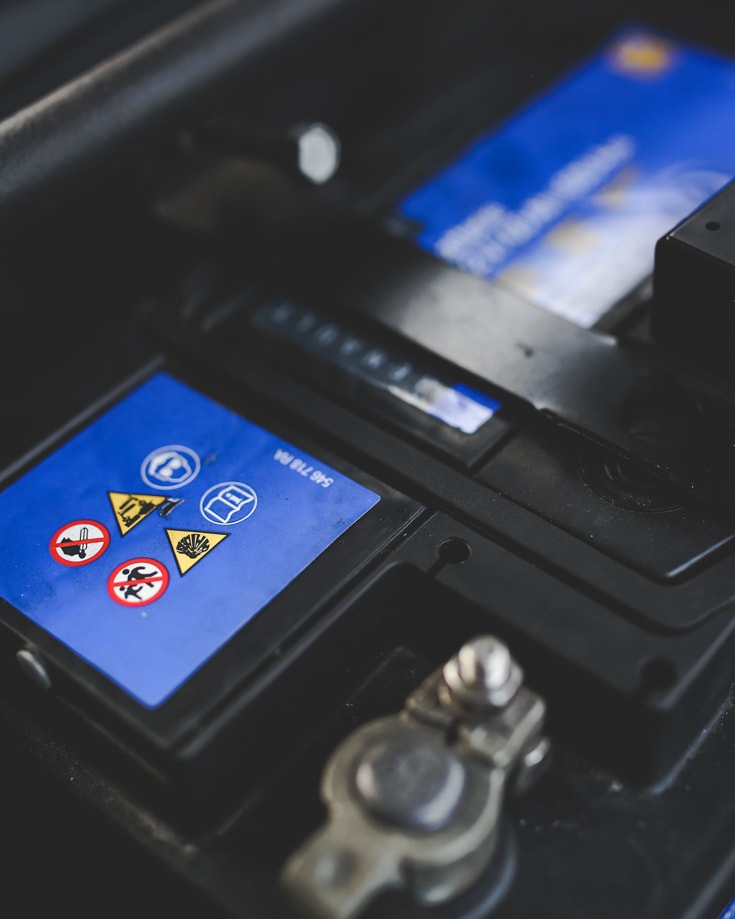
RV batteries should be sized to cope with your overall electrical demands and not just the inverter.
To figure out the size needed, you must consider all expected loads – both AC and DC appliances.
But converting DC to AC isn’t an efficient process, so any AC calculations need to factor this in.
Use our battery bank calculator to help figure this out – it already takes inefficiencies into account, so you don’t need to worry.
Many power inverters include in-built auto cut-off features, so they stop running if the battery voltage falls below a certain level.
It’s a great feature to help protect the battery bank from over-discharging and so help prolong their life.
If you have AC appliances, you’ll only ever use when on a campground, like a washing machine or air conditioning, keep these on the main supply circuit and not the RV inverter.
This will help keep the size of the battery bank needed down.
How to Use an RV Inverter
Once installed, using an inverter in a camper is super easy. Most inverters have a simple switch to turn on their power. It’ll be located on the device, or you may have a remote switch.
Once it’s switched on, the inverter is ready to power your AC appliances. Simply plug them directly into the inverter (they come with one or two sockets) or its extension cable, and you’re good to go.
Of course, every device will differ slightly, so you must familiarise yourself with the manual. The point is, though, using an inverter isn’t rocket science.
There are more complex setups where you can install the RV inverter onto your AC circuits. By using a transfer switch, you can flip between shore power and the inverter.
Should I Leave My RV Inverter on all the Time?
When the inverter is left switched on but with no appliances drawing any power, the device still uses some power.
How much varies between appliances. Take a look at the no-load consumption on the specification to see how much it uses.
Generating electricity and storing it in a motorhome is a hard-won battle, especially when living off-grid, so we’re pretty focused on efficiency and not wasting it.
If you occasionally use your AC appliances on the inverter, it’s worth switching off the inverter when you’re not using it.
Some RVers use household appliances all the time, though – a regular refrigerator is a typical example.
In this case, you’ll need to leave the RV inverter on all the time when you’re boondocking to keep it powered.
We recommend installing a separate, small inverter dedicated to the refrigerator to keep the no-load consumption to a minimum when the compressor isn’t running.
What’s the Difference Between an RV Inverter and a Converter?
You can get a lot more detail about this in our post Inverter vs. Converter & How to Tell the Difference, but we’ll summarise the main points here.
Both inverters and battery chargers transform voltage, but they do the opposite of each other.
A battery charger (sometimes referred to as a converter, converter charger, or power converter) turns AC power to DC, transforming 110v (or 220v) to 12v. You can get them to convert to 24v too.
An RV inverter (sometimes called a power inverter) turns Direct Current to AC, transforming DC power to AC power or 12v to 110v or 220v.
You need an inverter to run AC appliances from the camper battery bank.
You need a battery charger to charge the batteries from shore power or a generator.
A battery charger takes AC power and converts it to DC to charge the 12v batteries.
If you spend a lot of time at campgrounds with hookup facilities, a battery charger is the best way to keep your batteries topped up.
They’re also helpful for topping up the battery bank at home in readiness for camping weekends.
Inverters Vs. Inverter Chargers
You can get a lot more detail about this in our post about Inverter Chargers, but we’ll summarise the main points here.
You know now that an inverter transforms DC to AC current.
You also know that a converter transforms AC to DC. Well, an inverter charger combines both these devices into a single unit.
The internal workings of each function still operate as the separate devices would, but they’re simply consolidated into a single product.
Are Inverters Easy to Install in a Camper?
Installing an RV inverter can be pretty straightforward, but it depends on your setup.
If you have a basic setup and small portable inverter, it could be as simple as plugging it into a 12v socket, and it’s ready to use.
That approach is probably not great as a long-term solution, so consider alternative methods for hardwiring the inverter for more convenient use.
Best RV Inverters
We’ve published a detailed review of the most popular RV inverter brands and their inverters (you can check it out here).
How to Choose the Best Inverter for Your RV
If you are looking for the perfect 12v inverter so you can use your household AC appliances in your camper, there are a few features you should be looking out for.
Our post on the best inverters for campervans, RVs, and motorhomes includes a complete buying guide.
It covers a lot of detail about the features to look out for when choosing the most suitable inverter for your needs.
If you’ve already calculated the size of the inverter you need and are ready to choose your inverter, we recommend you read that post first.
If you’re simply looking for information at this time, here’s a quick summary of the things to look out for:
- Type of RV Inverter – modified or pure sine wave
- Inverter Size – Continuous Power or Running Power and Peak or Surge Power Rating
- Input Voltage
- Output Voltage
- Static Current or No-Load or Idle Consumption
- Efficiency Rating
- Price
- Safety Features
How Much Does a New RV Inverter Cost?
Most pure sine wave 12v inverters cost between $150 & $300 depending on the size and brand but the more powerful 3000w + models can be upwards of $500.
Budget, modified sine wave models come in under $50.
If you think you’ll use more electrical devices in the future and may need to increase your camper’s electrical system, buying a larger inverter now may be more cost effective than replacing it at a later date.
In Conclusion
Now you know everything about RV inverters. You know what they are, how they work, why you need one, and how to work out what size you need.
Graham Bogie

Graham is a seasoned marine electrical engineer with two decades of experience designing customized electrical systems for plant machinery and converting campers and overland vehicles. His expertise has led him to author the reputable Campervan Electrics Handbook and become the chief designer of the RV Wiring Design Tool. As a knowledgeable figure in the field, his YouTube channel, blog, Facebook group, and newsletter, offering electrical advice and product reviews, reach more than a million users each year.


